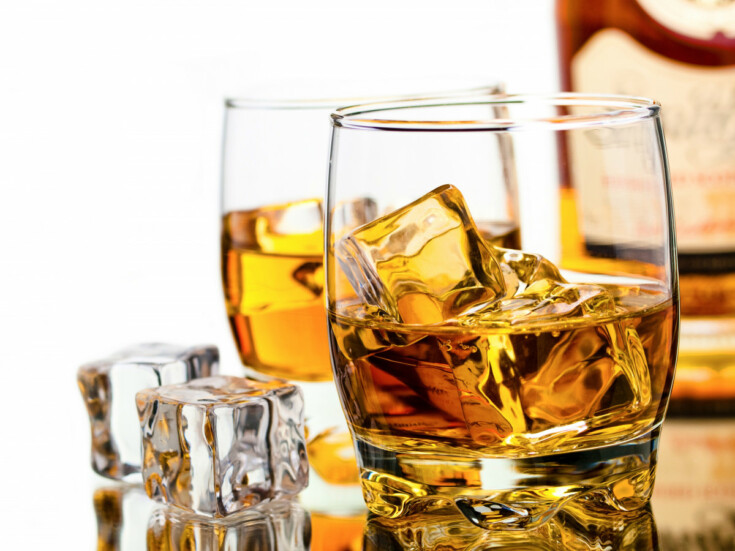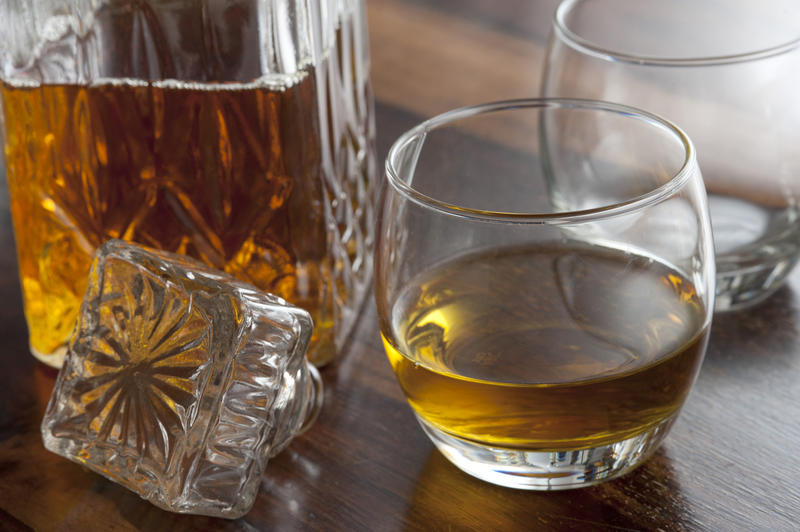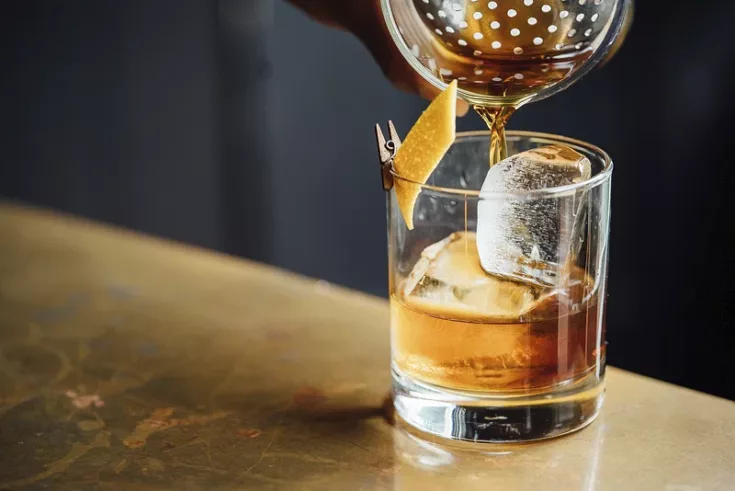
Whiskey is a popular spirit that has been enjoyed for centuries. While some people prefer to drink it straight, others may find the taste too strong or harsh. Fortunately, there are several ways to enhance the flavor of whiskey and make it more enjoyable.
Table of Contents
Understanding Whiskey Flavors
Whiskey is a complex spirit that offers a range of flavors and aromas. Understanding the different flavors that can be found in whiskey can help you appreciate it more and make it taste better. Here are some of the most common flavors found in whiskey:
- Vanilla: Vanilla is a common flavor in whiskey and is often derived from the oak barrels used to age the whiskey. The longer the whiskey is aged, the more vanilla flavor it will have.
- Caramel: Caramel is another common flavor in whiskey that is also derived from the oak barrels. The longer the whiskey is aged, the more caramel flavor it will have.
- Fruit: Many whiskeys have fruity flavors, such as apple, pear, and cherry. These flavors are often derived from the grains used to make the whiskey.
- Spice: Whiskey can also have spicy flavors, such as cinnamon, nutmeg, and clove. These flavors can come from the grains used to make the whiskey or from the barrels used to age it.
- Smoke: Some whiskeys have a smoky flavor, which comes from the malted barley being dried over peat fires.
- Peat: Peat is a type of soil that is used to dry malted barley in the production of some whiskeys. Whiskeys that are made using peat are often smoky and have a distinct earthy flavor.
It’s important to note that not all whiskeys will have all of these flavors, and some whiskeys may have additional flavors not listed here. Additionally, the flavor of a whiskey can be influenced by many factors, including the type of grain used, the water source, the distillation process, and the aging process.
Selecting the Right Glassware
 photo credit: www.freeimageslive.co.uk
photo credit: www.freeimageslive.co.uk
When it comes to enjoying whiskey, selecting the right glassware is crucial. The glass you choose can significantly impact the aroma and flavor of your whiskey. Here are some tips to help you select the right glassware for your whiskey:
- Use a Proper Whiskey Glass
Using the right glassware can enhance your whiskey-drinking experience. A proper whiskey glass should have a wide bowl that narrows at the top, allowing the aroma of the whiskey to concentrate. The most popular options are the Glencairn glass, the Copita glass, and the Tulip glass. These glasses are designed to highlight the aroma and flavor of the whiskey.
- Avoid Using a Tumbler or Shot Glass
While a tumbler or shot glass may be convenient, they are not ideal for whiskey tasting. Tumblers are wide and shallow, which can cause the whiskey to evaporate quickly and lose its aroma. Shot glasses are even worse, as they are too small to allow the whiskey to breathe.
- Consider the Material
Glass is the most popular material for whiskey glasses, but there are other options as well. Crystal glasses are often used for special occasions, as they are more delicate and elegant than regular glass. Additionally, some whiskey enthusiasts prefer using copper or pewter cups, as they can add a unique flavor to the whiskey.
- Keep It Simple
When selecting glassware, it’s important to remember that simplicity is key. Fancy or ornate glasses may look impressive, but they can distract from the whiskey itself. Stick to a simple, elegant design that allows the whiskey to be the star of the show.
Selecting the right glassware is an essential part of enjoying whiskey. By following these tips, you can enhance your whiskey-drinking experience and fully appreciate the flavors and aromas of your favorite whiskey.
The Art of Adding Water
Whiskey enthusiasts know that adding a small amount of water to their liquor can enhance its aroma and flavor. But how much water should you add? And what type of water should you use? Here are some tips for mastering the art of adding water to your whiskey.
Using Distilled Water
When it comes to adding water to whiskey, the type of water you use matters. Experts recommend using distilled water because it is free of impurities that can affect the taste of the whiskey. Tap water, on the other hand, can contain minerals and other substances that can alter the flavor profile of the whiskey.
Distilled water can be found at most grocery stores and is relatively inexpensive. It is also a good idea to use a clean container to hold the water, such as a glass or stainless steel bottle, to avoid any contamination from plastic or other materials.
Knowing the Right Amount
Adding water to whiskey is a delicate balance. Too much water can dilute the flavor and aroma, while too little water may not bring out the full potential of the whiskey. So, how much water should you add?
The ideal amount of water to add to whiskey varies depending on personal preference and the type of whiskey being consumed. As a general rule of thumb, adding a few drops of water to a glass of whiskey can help release the flavors and aromas.
For cask-strength whiskey, which can have an alcohol content of 55% to 65% ABV, adding a small amount of water can help bring out the flavors and aromas. A study published in the journal Scientific Reports found that adding water to whiskey can increase the concentration of guaiacol, a compound that contributes to the smoky flavor and aroma of whiskey.
It is recommended to add water gradually, a few drops at a time, and taste the whiskey after each addition until the desired flavor is achieved. Using a dropper or a teaspoon can help control the amount of water added.
The Role of Ice
When it comes to whiskey, adding ice can be a controversial topic. Some purists argue that adding ice dilutes the whiskey and ruins its flavor, while others believe that a little bit of ice can actually enhance the taste. Here, we’ll explore the role of ice in making whiskey taste better.
Choosing the Right Ice
If you do decide to add ice to your whiskey, it’s important to choose the right type of ice. Small, thin ice cubes will melt quickly and dilute the whiskey too much, while large, dense ice cubes will melt more slowly and keep the whiskey cooler for longer without watering it down too much. Whiskey stones, which are cubes made of soapstone or other materials that can be frozen, are also a popular option for keeping whiskey cool without diluting it.
Ice vs. No Ice
Whether to add ice or not is largely a matter of personal preference. Some people prefer their whiskey neat, or without any ice at all, so they can savor the full flavor of the whiskey. Others find that a small amount of ice can actually enhance the flavor by opening up the aromas and flavors in the whiskey.
Experimenting with Aging
Experimenting with aging is a great way to make whiskey taste better. There are several methods to age whiskey, and each method can produce different results. Two popular methods are using oak chips and understanding the aging process.
Using Oak Chips
Using oak chips is a popular method to age whiskey quickly. Oak chips are small pieces of oak wood that have been toasted or charred. When added to a bottle of whiskey, the oak chips will infuse the whiskey with flavors and aromas that are similar to those found in traditionally aged whiskey.
To use oak chips, add a small amount of chips to a bottle of whiskey and let it sit for a few days or weeks. The longer the whiskey sits with the oak chips, the more pronounced the flavors and aromas will become. It’s important to note that using too many oak chips or leaving them in the whiskey for too long can result in an overpowering flavor.
Understanding the Aging Process
Understanding the aging process is important when experimenting with aging whiskey. Traditionally, whiskey is aged in oak barrels for several years. During this time, the whiskey interacts with the wood, which imparts flavors and aromas to the whiskey.
The aging process can be broken down into three stages: extraction, oxidation, and evaporation. During the extraction stage, the whiskey absorbs flavors and aromas from the wood. During the oxidation stage, the whiskey reacts with the air, which can change the flavor and color of the whiskey. During the evaporation stage, some of the whiskey evaporates, which can concentrate the flavors and aromas.
By understanding the aging process, whiskey enthusiasts can experiment with different methods of aging, such as using oak chips or exposing the whiskey to air. It’s important to note that experimenting with aging can be unpredictable, and not all experiments will produce desirable results. However, with some experimentation and patience, whiskey enthusiasts can create unique and flavorful whiskeys that are tailored to their tastes.
Pairing with Food
Pairing whiskey with food can be a great way to enhance the flavors of both the whiskey and the food. There are many different types of food that can be paired with whiskey, but some of the most popular options include cheese and chocolate.
Cheese and Whiskey
When pairing whiskey with cheese, it’s important to consider the flavors and textures of both the whiskey and the cheese. A good rule of thumb is to pair stronger cheeses with stronger whiskeys, and milder cheeses with milder whiskeys.
For example, a sharp cheddar cheese pairs well with a smoky, peaty Scotch, while a creamy brie cheese pairs well with a smooth, mellow bourbon. It’s also important to consider the texture of the cheese – a hard cheese like Parmesan pairs well with a full-bodied whiskey, while a soft cheese like goat cheese pairs well with a lighter, fruitier whiskey.
Chocolate and Whiskey
Chocolate and whiskey are a classic pairing that can bring out the best in both flavors. When pairing whiskey with chocolate, it’s important to consider the sweetness and bitterness of both the whiskey and the chocolate.
A dark chocolate with a high percentage of cocoa pairs well with a rich, full-bodied whiskey, while a milk chocolate pairs well with a lighter, fruitier whiskey. It’s also important to consider the flavors in the chocolate; a chocolate with hints of caramel or toffee pairs well with a whiskey that has similar flavors.
Pairing whiskey with food can be a fun and delicious way to enjoy both. By considering the flavors and textures of both the whiskey and the food, you can create pairings that enhance the flavors of both.
Exploring Whiskey Cocktails
 photo credit: www.rawpixel.com
photo credit: www.rawpixel.com
Whiskey cocktails are a great way to enjoy the spirit while exploring new flavors and combinations. Here are two subsections that detail classic whiskey cocktails and innovative whiskey mixes.
Classic Whiskey Cocktails
Classic whiskey cocktails have been around for decades and continue to be popular today. Here are a few examples:
- Old Fashioned: This cocktail is made by muddling sugar with bitters and water, adding whiskey, and garnishing with a citrus twist and cherry.
- Manhattan: The Manhattan is made by stirring whiskey, sweet vermouth, and bitters together, then straining into a glass and garnishing with a cherry.
- Whiskey Sour: A Whiskey Sour is made by mixing whiskey, lemon juice, and simple syrup, then shaking with ice and straining into a glass.
Innovative Whiskey Mixes
Innovative whiskey mixes are a great way to explore new combinations and flavors. Here are a few examples:
- Smoky Whiskey Margarita: This cocktail is made by mixing smoky whiskey with lime juice, agave nectar, and orange liqueur, then serving over ice with a salt rim.
- Spiced Whiskey Cider: Spiced Whiskey Cider is made by mixing whiskey with apple cider, cinnamon, and nutmeg, then heating and serving warm.
- Whiskey Ginger: This cocktail is made by mixing whiskey with ginger ale and garnishing with a lime wedge.
When making whiskey cocktails, it’s important to use quality ingredients and follow the recipe closely. Experimenting with different combinations can lead to exciting new flavors and experiences.
Frequently Asked Questions
What are some popular mixers for whiskey besides soda?
Whiskey can be mixed with a variety of other ingredients to create delicious cocktails. Some popular mixers for whiskey include ginger ale, apple cider, lemonade, and cranberry juice. These mixers can add a unique flavor profile to your whiskey and create a refreshing drink.
What are some healthy mixers to use with whiskey?
If you are looking for healthy mixers to use with whiskey, you can try using fresh fruit juices such as orange, grapefruit, or pineapple. These juices are packed with vitamins and minerals and can add a natural sweetness to your whiskey without adding extra calories or sugar.
What fruits or juices pair well with whiskey?
Fruits such as cherries, peaches, and apples pair well with whiskey. You can also try adding a splash of citrus juice, like lemon or lime, to your whiskey for a refreshing and zesty flavor. Experiment with different fruits and juices to find the perfect pairing for your taste buds.
What are some warm whiskey cocktails to try?
During the colder months, warm whiskey cocktails can be a cozy and comforting treat. Some popular warm whiskey cocktails include hot toddies, Irish coffee, and mulled whiskey cider. These drinks are perfect for sipping by the fire on a chilly evening.
What are some popular chasers for whiskey?
If you prefer to take your whiskey as a shot, you may want to have a chaser on hand to help cut the burn. Some popular chasers for whiskey include pickle juice, beer, and ginger beer. These chasers can help cleanse your palate and enhance the flavor of your whiskey.
Conclusion
In conclusion, there are several ways to improve the taste of whiskey. Using a proper whiskey glass can enhance the aroma and flavor of the drink. Adding water to a glass of whiskey can also help release the flavors and make it smoother to drink. Improving your whiskey-tasting abilities can help you identify the different flavors and aromas in the drink.
Adding bitters to whiskey can give it more flavor and depth. There are different types of bitters available, such as orange, chocolate, and aromatic bitters. Age or finish (meaning secondary maturation, not drinking) your whiskey can also help improve its taste. It can add more complexity to the flavors and aromas of the drink.
It is important to note that while these methods can enhance the taste of whiskey, it ultimately comes down to personal preference. Some people may prefer their whiskey neat, while others may enjoy it with a splash of water or a few drops of bitters. Experimenting with different methods can help you find the best way to enjoy your whiskey.
Overall, the key to making whiskey taste better is to take your time and savor the drink. Appreciating the flavors and aromas of whiskey can enhance your overall drinking experience.



